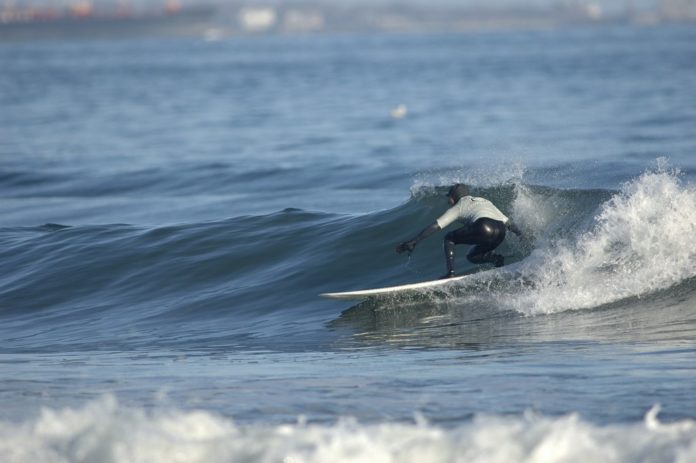 Surfline.com and surfing magazines. And when the waves are good, the surfers are likely to stay the night. / " title="IT'S GETTING EASIER for surfers to locate good waves, with Web sites like Surfline.com and surfing magazines. And when the waves are good, the surfers are likely to stay the night. /"/>
Surfline.com and surfing magazines. And when the waves are good, the surfers are likely to stay the night. / " title="IT'S GETTING EASIER for surfers to locate good waves, with Web sites like Surfline.com and surfing magazines. And when the waves are good, the surfers are likely to stay the night. /"/>When they promote the Ocean State, tourism officials talk about beaches, boating, fishing. Surfing, however, gets at best a quick mention on the Web sites and in the brochures.
Yet local surfers say out-of-state visitors love to surf in Rhode Island.
“We have better waves,” said Peter Pan, owner of the surf shop Gansett Juice, who has been called the “Pied Piper” of Rhode Island surfing. “We have reefs and point breaks up here, which are basically the best conditions you can have for surfing.”
Rick Rhodes, an associate dean for the College of the Environment and Life Sciences at the University of Rhode Island and a 40-year surfing veteran, agreed.
“The beauty of Rhode Island is there are lots of different kinds of breaks, and that is what’s attractive to surfers,” he said, noting that there are more than 100 unique surfing spots in the state. “We’ve got a great coastline that has southerly facing beaches and easterly facing beaches, and the beauty of that is we can take a lot of different swell directions and wind directions.”
This is something that doesn’t occur in many of the nearby states, and Pan and Rhodes said the tourists have noticed.
Pan, who teaches surfing and organizes six surfing contests in the state each year, said that about 50 percent of the surfers he sees come through his shop are from out of state. And at the contests, which usually bring in 40 to 60 people each, it can be up to 80 percent tourists.
“In the summer the place is infested,” Pan said, noting his distaste for the way tourists clog up the ocean.
Rhodes, who would also rather not bring too many more people in, agreed.
“We do see a lot of out-of-state surfers, especially during peak swell times, which tends to be the middle of the summer through the fall. That reflects hurricane season, and during that time it’s not uncommon to see surfers from New York, New Jersey, Massachusetts, Connecticut, New Hampshire and Maine,” said Rhodes.
Even the R.I. Department of Environmental Management has seen an increase in surfing.
“We have been permitting surfing at three of our state beaches, weather and conditions permitting,” said John Faltus, deputy chief of the Division of Parks and Recreation at DEM.
“We’ve been doing that for the last several years now because of an increase in demand.”
The R.I. Division of Tourism doesn’t track how many people come to surf in Rhode Island, or their economic impact, said Joe Blanchette, a communications specialist for the agency. But he did say in an e-mail that “what we do know is that leisure day-trippers spend around $60 per day, and that number grows to around $154 per day if they spend the night.”
And if the waves are there, it’s a good bet that many will spend the night.
“It’s a cardinal sin to drive away from good waves,” said Rhodes. “So if it looks like we’ve got a storm offshore and it’s pushing good waves, I think they stay. And I base that on seeing guys from New York and New Jersey on consecutive days here. There aren’t so many people in the water that you don’t recognize people and cars.”
And with technology it’s becoming easier for tourists to track where the waves are.
“Surfline.com issues surf alerts all over the world,” said Rhodes. It uses LOLA, an “automated global surf forecasting tool.”
But they also can learn about Rhode Island through surfing magazines.
“In any of the Northeast articles that come out in any of the big surf magazines you’ll see Rhode Island featured,” said Rhodes.
Because of this, and despite his and Rhodes’ wish that the tourists would “stay home,” Pan said he simply doesn’t understand why more isn’t done to promote surfing in Rhode Island.
“I think the state is clueless. They could be marketing it when it comes to promoting the sport, but they do as little as they can,” Pan said. “We’re supposed to be the Ocean State.”












